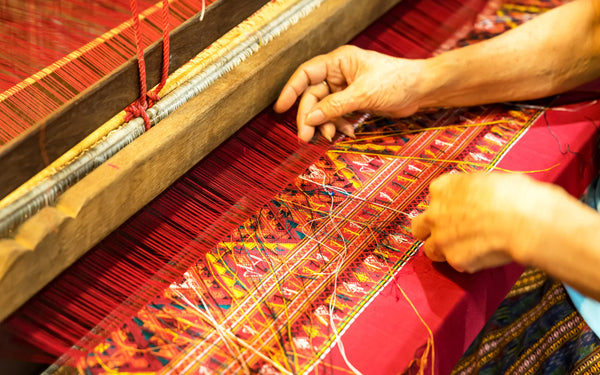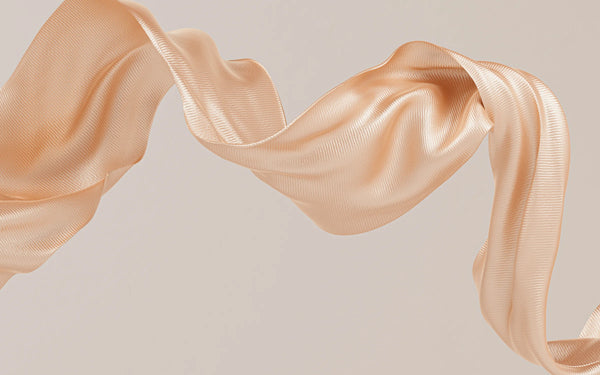Key Takeaways
silk is a natural fiber with excellent thermo-regulatory properties. Thanks to its ability to absorb humidity, it maintains a comfortable temperature for the body. Silk is suitable for the intermediate and summer seasons, but remains insufficient for extreme cold. Compared to other fabrics, it offers more comfort than cotton or polyester in summer. For winter, wool and synthetic materials like acrylic keep you warmer.
The French brand The Oversized Hoodie® 🇫🇷 is famous for its textile expertise, particularly its collection of high-end, Oeko-Tex certified 100% silk products ®Standard 100
The thermal properties of silk
silk is a textile fiber produced from the thread secreted by the silkworm. Its unique composition makes it a fabric with excellent properties for regulating body temperature.
First of all, silk is an effective thermal insulator. Composed mainly of fibroin, a natural protein, it traps air and limits the exchange of heat between the body and the outside.
In addition, silk has a strong moisture absorption capacity. It can hold up to 30% of its weight in water before appearing damp. By absorbing perspiration, silk prevents feelings of cold due to the evaporation of moisture on the skin.
Finally, the microporous structure of silk gives it excellent breathability. Air circulates easily through the fabric, helping to wick away moisture and excess heat.

How silk regulates temperature
Thanks to its unique properties, silk helps maintain a comfortable body temperature in different conditions:
-
In winter, silk contains the heat released by the body by forming an insulating barrier. The air trapped in its fibers retains heat close to the skin.
-
During an activity generating sweat or perspiration, silk absorbs it quickly. This prevents cold sensations due to contact of air with damp skin.
-
In summer, silk wicks away excess heat and humidity thanks to its airy structure. This cooling effect makes silk very comfortable in strong heat.
-
When temperature changes, silk adapts to maintain a stable and pleasant skin temperature.
Thus, silk is an ally of thermal comfort in varied climatic conditions.
Benefits of silk for warmth
Wearing silk offers several benefits in terms of thermoregulation:
-
A soft and silky touch, for optimal comfort against the skin.
-
Effective protection against the cold without overheating, thanks to its insulation capacity.
-
Maintains pleasant freshness in hot weather.
-
High breathability for better wicking of perspiration.
-
A light and flexible structure, offering great freedom of movement.
-
Effective temperature regulation through seasonal changes.
-
Natural properties making silk hypoallergenic. Ideal for sensitive skin.
-
A durable fabric that maintains its qualities over time.

Also read: What is the best silk in the world ?
Limits of silk as an insulator
Although comfortable in many situations, silk still has limits in protecting against cold:
-
Fine and light, silk lacks thickness to effectively block heat loss.
-
Its thermal conductivity higher than wool or synthetic materials.
-
Unsuitable for very low temperatures below 5°C. Other materials like cashmere or fur retain heat better.
-
Often needs to be combined with other warmer layers for winter.
-
Less effective than materials such as down for sleeping in extreme cold.
Thus, silk alone cannot constitute sufficient insulation for harsh winter climates. It is preferably used during intermediate seasons or as a base layer.
Silk provides a good level of warmth as a first layer of clothing in winter. It can be found in blouses, scarves, fine gloves, or even tights.
— Geoffrey, Founder of The Oversized Hoodie®
Also read: How is silk made ?
Silk in winter: an ally against the cold ?
In winter, silk provides a good level of warmth as a first layer of clothing. It can be found in:
-
blouses and tops in silk, to layer with a wool sweater on top. The combination of the two materials is ideal for protecting yourself from the cold.
-
long johns or silk tights, for initial insulation of the legs under pants.
-
scarves and scarves in silk, which effectively protect the neck without overheating.
-
Fine silk gloves, offering warmth and dexterity for mid-season outings.
At The Oversized Hoodie®, we know how important it is to choose the right materials to stay warm while maintaining a trendy look. This is why we love working with silk so much, which combines timeless style and optimal thermal comfort.
— Geoffrey, Founder of The Oversized Hoodie®

Silk in summer: a fresh and breathable material
In summer, silk becomes an ally comfort thanks to its microporous structure which promotes air circulation.We find it in:
- Lightweight dresses and blouses which allow good ventilation of the body
- scarves and silk scarves, which stay cool on contact with the skin
- Summer pajamas in silk, for breathable bedding in hot weather
- Thin gloves that protect hands from perspiration
Silk is therefore ideal for regulating sweating and maintaining body freshness during the summer season.
Also read: What material to wear in summer ?
Maintain the thermoregulatory nature of silk
To preserve the excellent thermoregulation properties of silk, it is recommended to:
- Hand wash or machine wash at low temperature (30°C maximum)
- Use a mild detergent, without harsh chemicals
- Avoid machine drying which risks damaging the fibers
- Iron at low temperature, with fabric between iron and silk
- Store silk clothing in a dry place, away from light
By taking care of your silk in this way, you extend its lifespan while maintaining its qualities of thermal comfort.
Comparison of silk with other fibers
Silk and cotton: which keeps you warmer ?
Cotton has poor thermal insulation and absorbs moisture moderately. Silk regulates temperature better thanks to its insulation and perspiration absorption properties. It maintains a more constant sensation of heat.
Silk versus viscose: which material to wear in summer ?
Viscose has limited breathability. In summer, the airy structure of silk allows for better air circulation and evacuation of body moisture. Silk offers more coolness in hot weather.
Silk versus polyester: which fabric for high heat ?
Polyester has low sweat absorption. It tends to stick to the skin and cause feelings of discomfort. Silk, very breathable, remains comfortable even during high heat and intense physical activity.
Also read: Does polyester keep you warm ?
The best fabric against the cold: silk or wool ?
Wool has an excellent ability to insulate from cold. However, it lacks breathability and tends to overheat. Silk maintains a pleasant feeling of warmth without causing overheating.
Nylon versus silk: which wins in terms of warmth ?
Nylon has thermal insulation similar to silk. However, it absorbs little moisture and breathes poorly. Silk better regulates temperature thanks to its unique microporous structure.
Our experience in making outdoor clothing has taught us that silk, combined with technical materials such as softshell or fleece, allows us to create outfits that are both elegant and perfectly suited to winter conditions.
— Geoffrey, Founder of The Oversized Hoodie®
Care of silk clothing
To preserve the properties of silk, it is recommended to wash it by hand or in the machine at low temperature, with a mild detergent. Ironing should be done at moderate temperature.

Silk Care Precautions
Is silk resistant to wear ?
Silk is a resistant fiber but sensitive to friction and repeated abrasion. It is better to wash it by hand rather than in the machine, and to limit tumble drying which wears out the fabric.
The discoloration of silk under the effect of the sun
Silk is sensitive to UV. Prolonged exposure to the sun may gradually discolor the fabric. It is advisable to limit this exposure or rinse regularly with cold water.
Risk of silk degradation in the presence of humidity
Excessive humidity can damage silk fibers and make them brittle. It is recommended to store it in a dry place, and wash/dry it quickly if it gets wet.
Does silk absorb sweat ?
Silk has excellent perspiration absorption capacities, up to 30% of its weight. This property allows it to remain dry and comfortable against the skin.
Conclusion
Silk is a fiber with excellent thermoregulation capabilities. Thanks to its unique thermal insulation, moisture absorption and breathing properties, it effectively regulates body temperature. Silk offers optimal comfort in summer and winter, and is suitable for many temperature-regulating garments such as silk scarves.
| Appearance | Description |
|---|---|
| Thermal Properties | Thermal insulation, moisture absorption capacity, breathability |
| Use in Winter | Retains heat, ideal as a first layer |
| Use in Summer | Removes excess heat and humidity, cooling effect |
| Adaptability | Regulates body temperature in various climatic conditions |
| Comfort | Soft and silky feel, comfortable against the skin |
| Limits | Less effective in extreme cold without additional layers |
| Maintenance | Wash low, hang dry, iron low |
FAQ
What material keeps you warmest ?
The most insulating materials are wool, cashmere, goose feathers and certain synthetic fibers such as acrylic. They provide excellent protection against the cold.
Is silk warm ?
Silk provides correct thermal insulation. It keeps you warm as a first layer, but lacks thickness for extreme cold. It is often combined with wool or fleece on top.
When to wear silk ?
Silk is ideally worn in spring and summer for its refreshing qualities. In winter, it combines well with other materials such as cotton or linen for intermediate insulation.
What is the best fabric against the cold ?
Wool remains the most protective fabric, followed by cashmere and insulating synthetic fibers such as acrylic or neoprene. polyester and nylon are also widely used in warm clothing.
Does acrylic keep hot ?
Acrylic provides high thermal insulation similar to wool. It is an excellent protection against the cold, often used in fleeces and warm clothing.
Warmer acrylic or polyester ?
Acrylic and polyester have similar insulating capacities. Acrylic retains heat a little better, while polyester dries more quickly. They are often used together in technical clothing such as windbreakers.
Updated February 2 2024







